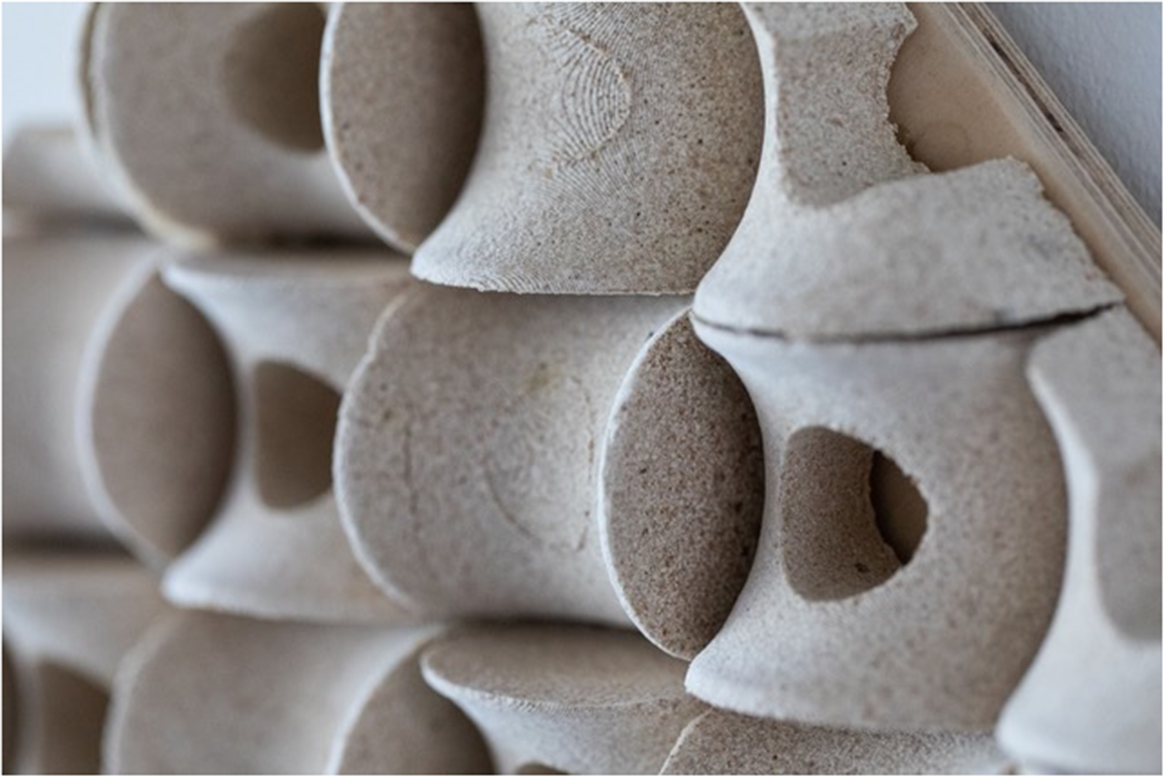Context
Current biomaterial architectural and design research synthesizes old practices and new technologies. As such it attempts to leverage ancient evolutionarily specific biological processes and assemble (or grow) them into components for novel building systems. Quite often this research emerges out of academic institutions that can adopt an exploratory process that is less tied to issues of policy, profitability, scalability and feasibility that are fundamental metrics to be considered in industries. Academic institutions often have a more expansive view of materials and situate the historical making of buildings into local and cultural contexts which can reveal potentials to revive lost or forgotten approaches to fabrication that can be applicable to new modes of production. Academic explorations operate within a field where aesthetics and performance may be more equally weighted, leading to aspirational and compelling future speculations. Proof of concepts in academia may emerge through more naïve engagements with materials. For these ‘discoveries’ to inform a larger context of material fabrication, techniques and applications, industries need to be able to critically translate them into processes that, to be truly impactful, must be safety tested, scaled, and evaluated. Industries in the private realm need to be patented and monetized, while public research may be dependent on policy and effective community funding. Thinking about how research can be shared across these gradient invites conversations which look beyond either industrial or academic specific questions. Academic explorations can influence research trajectories and manufacturing processes invite investigations into life cycle analyses which help provide a context for new solutions,
Contributions
We invite contributions in the following areas:
Results
-
Innovation in how the field of biomaterials can craft the future of the built environment.
-
Examples of how to reshape our relationship to the environment for both humans and non-human well-being?
-
Biotechnology methodologies that transform design practices across different fields.
-
Innovative methods of material synthesis and fabrication using biological processes supported by experimental data.
-
Assessment methods and results for understanding new biological materials for construction including, for example, assessments of carbon sequestering, energy use in materials production etc.
-
Examples of in-situ deployments of new materials including assessments of performance, quantitative and qualitative.
-
We also welcome null results papers that report experiments which may reveal fundamental limits of materials or processes.
Analysis
-
Reviews of key materials, technologies, and case studies.
-
Proposals for design and/or assessment frameworks. These can include the design of new design or modelling computational software and hardware, deployments of models such as Life Cycle Analysis for biological materials and processes. Approaches which address the circular economy or sustainable use of bio-based resources and processes.
-
Horizon scanning or ‘call to action’ articles assessing relevant emerging technologies.
Impact
-
Reviews of patents and industrial applications in the field.
-
Speculative visions grounded in emergent research
-
Critical evaluation of novel projects, and their potential efficacy, evaluated against existing materials and methods of construction.
-
Discussions on the academic, legislative and industrial barriers to innovation.
-
Evaluation of processes and impacts and economy of scaling up.
Additional material and early outputs
We welcome a broad range of curated discussion pieces including submission of design portfolios, short polemics, position pieces, or provocations. As the question content develops, we expect this engagement to comment on the existing archive of published material.
How to contribute to this Question
If you believe you can contribute to answering this Question with your research outputs find out how to submit in the Instructions for authors (https://www.cambridge.org/core/journals/research-directions-biotechnology-design/information/author-instructions/preparing-your-materials). This journal publishes Results, Analyses, Impact papers and additional content such as preprints and ‘grey literature’. Questions will be closed when the editors agree that enough content has been published to answer the Question so before submitting, check if this is still an active Question. If it is closed, another relevant Question may be currently open, so do review all the open Questions in your field. For any further queries check the information pages (https://www.cambridge.org/core/journals/research-directions-biotechnology-design/information/about-this-journal) or contact this email (biotechnologydesign@cambridge.org).
Competing interests
The authors declare none.





